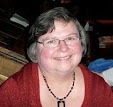It is always so interesting to hear an author discuss his or her book. This was most especially true when Lily King discussed Writers & Lovers. There were so many similarities between her life and that of Casey (Camilla) Peabody's, the protagonist of this novel. As the book opens the reader is told of the death of Casey's mother, who was vacationing in Cuba. This life altering event permeates the entire novel and weighs on her everyday of her life. King, in her virtual lecture to the subscribers of Pittsburgh Arts and Lectures' Ten Literary Evenings, relates most of those same feelings that her protagonist felt.
Struggling to finish her novel, Casey finds herself living on a shoestring in the potting shed adjacent to a friend of her brother, Caleb. She works double shifts at the Iris Restaurant in Harvard Square, traveling to and back on her bicycle. She has had many and varied life experiences like living abroad in Spain, completing a writing residency in the Berkshires, and relationships with men who leave her life a void.
During the Red Barn residency she meets an attractive man, Luke, with whom she nurtures a relationship only to find out that he is married and ends the liaison. When attending an author's reading and book signing, Muriel, Casey's very close friend, introduces her to Silas, also an aspiring writer and the two seem to connect, but Silas strangely leaves town and breaks their upcoming date. Enter Oscar Kolton, who is seated at Casey's table at Iris with his two young sons. He is 47, widowed, and is strongly attracted to her, as she is to him. They beginning dating and Casey enjoys the time the two spend with his sons. During this time Silas returns to the area and the two resume their conversations and dating.
The reader pulls for Casey at every turn as so many events throw her life into turmoil - abusive patrons at Iris that result in her being fired, an accident on her bicycle, the possible diagnosis of breast cancer, and endometriosis, and the search for an agent for her book. She seeks help from a therapist and is encouraged to face her grief and fears. Steadfast in the novel is the theme of the geese that Casey passes everyday on her bike. They represent peace in her life and home. It is not until the end of the novel that Casey relates their plight with hers. King expresses it so beautifully.
"A book in the library said that some Canada geese may travel as far as Jalisco, Mexico. My mother will like that, the long exhilarating trip, the foreign landing. But others, the book said, will stay where they are for the winter. Those geese are already home."
And so was Casey as she became at peace with herself.
Told in the first person, King's writing is exquisite and expressive. Her sentences make the reader want to reread them for the poetic feeling of them. Casey is a character with whom one empathizes and loves because of her hurt and determination to plod on. She allows the reader to see hope in the direst of situations, a lesson for all in 2020.


















